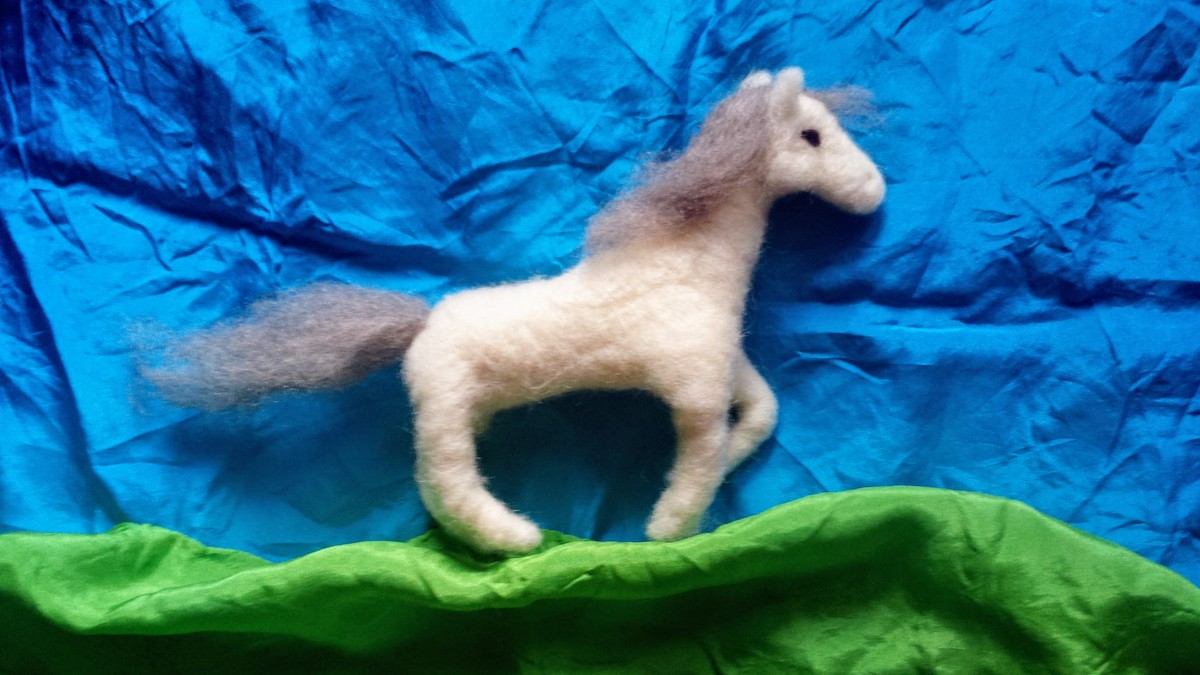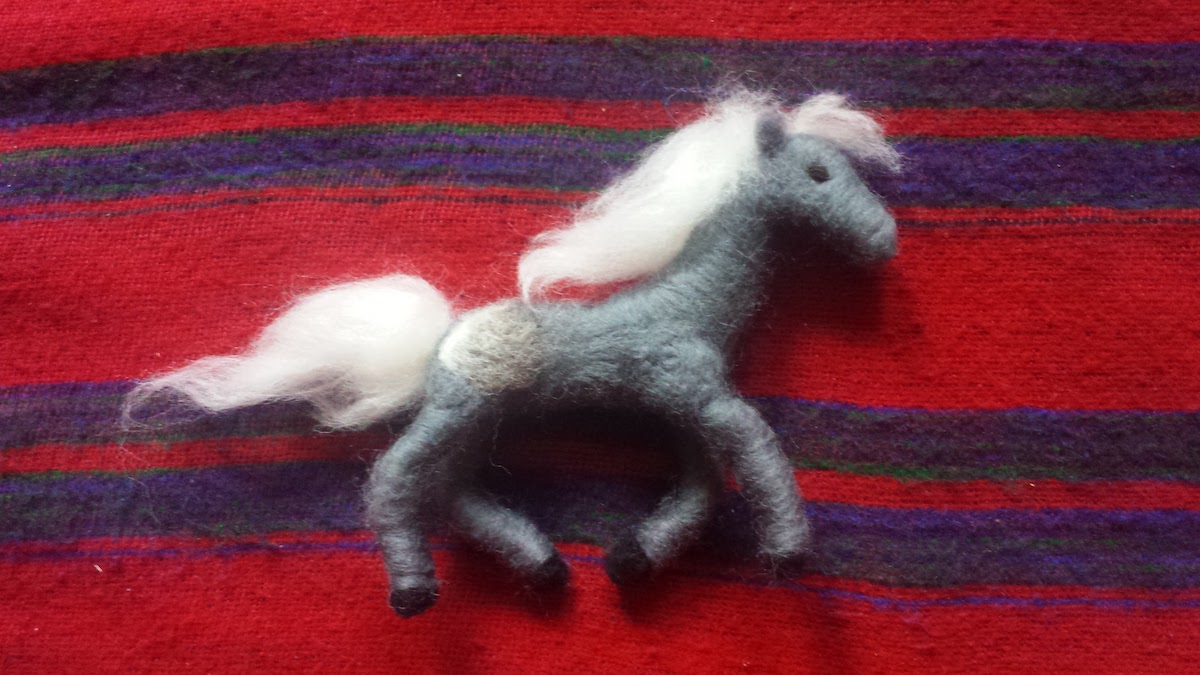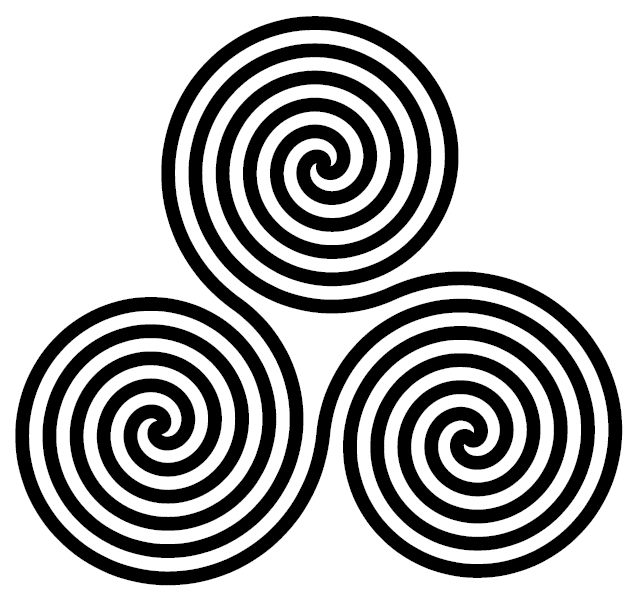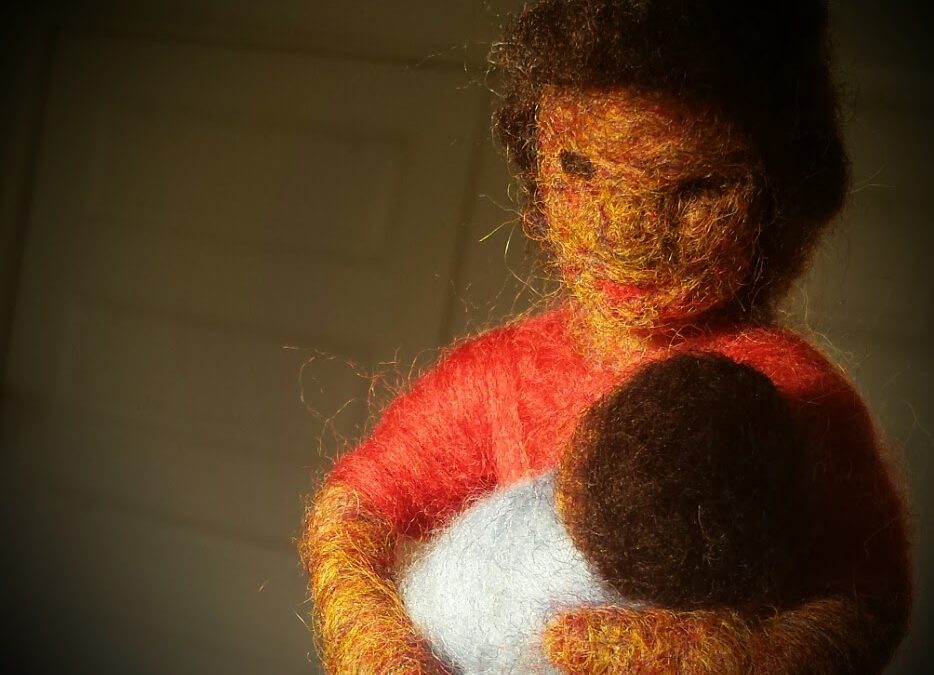If you’ve ever been to Meadowlark, my music class for children and caregivers, you’ve seen our weekly felted puppet show. Today I’m going to share more about what goes into creating a Meadowlark puppet show. And I want to let you in on the story behind our current puppet show song, “All the Pretty Little Horses.”

The Making of a Puppet Show
I learned to make handmade felted puppets during the years I spent teaching in Waldorf early childhood programs. Through observing a few different mentors as they created their own puppets, I learned the art of needle felting.
In needle felting, you bind together tufts of colored wool, poking them into place with a barbed needle. It’s careful work, but it’s also very intuitive and forgiving, as little by little, your creation comes into form. Needle felting is a great craft to do while watching your children play, and older children can try their hand at it too, though supervision is required. My four year old son is always eager to try his hand at the needle.
I usually create puppet shows to accompany songs in languages other than English, so that the visuals can help people understand the words. But every now and then, I come across a song in English that’s so visually evocative, I can’t help myself– I have to bring it to life with puppets. “All the Pretty Little Horses” is one of those songs.

The Story Behind the Song
“All the Pretty Little Horses” is an American folk lullaby. Most people know this song by its iconic first verse:
Hush-a-bye, don’t you cry
Go to sleep little baby
When you wake
You shall have
all the pretty little horses
Blacks and bays, dapples and greys,
Coach and six little horses.
These words, and the hypnotic melody accompanying them, conjure a warm, tender scene– a mother rocking her baby to sleep. Like so many lullabies, the song feels soothing but also melancholy, owing to its minor key.
But in this song, there’s more behind the melancholy. A lesser known second verse sheds some light on the song’s history.
Way down yonder
In the meadow
Poor little baby crying Momma
The birds and the butterflies
Flutter round his eyes
Scares the poor baby cryin’ Momma
–This version transcribed by Dorothy Scarborough, 1925)

I first discovered this song as a young musician, leafing through the dog-eared pages of our family singalong go-to, Rise Up Singing. This was also where I first learned of the story behind the song. Apparently, this second verse dates back to the times of the American slavery. The song, it is believed, reflects the perspective of an enslaved woman, who is being forced to care for the master’s child, while her own child is out in the fields, left to fend for itself. As she sings, she describes how her own child must be missing her.
This story speaks powerfully to me as a mother. It describes the worst heartache I can imagine, to be forcibly separated from my children. It also poses an interesting challenge for me in the interpretation. To share the verse in class as it’s written above doesn’t feel right to me in a class for small children, given that it refers to fear and separation. At the same time, this history is so important, and speaks so strongly to us as mothers that I’ve wanted to share it with the caregivers in the class. Just so that we can all remember that long ago woman, and honor her by acknowledging the reality of her lived experience. Then I realized, I could tell you here.

About the Puppet Show
The puppet show is my attempt to bridge the gap between what feels right to bring to the children in class, and what is likely historically true. I’ve represented the singer as an African-American woman. I’ve also reunited her with her child. This felt right to me, because we hold our children in the tenderness of our hearts, even when we are physically separated. We hold them in our hearts when circumstances require us to seek other caregivers to be with them. We hold them when we go back to work. When they start school. When they grow up, get married, have children. If my mother and Grandmothers are right (and lord knows they pretty much always are!) we will hold them forever, even as we let them go, to follow their own paths. And they will probably never know how we hold them, until, when they become parents, they discover it themselves.
One thing I know for sure… When our children grow up, they’ll remember the songs we sang together. Maybe they’ll even pass them onto their children. Songs like this help reweave our connection to that long ago mother, and to all the mothers who have been.
Hear the Song
Source– Traditional. Vocals, guitar, and production– Noe Venable, Violin– Alan Lin

